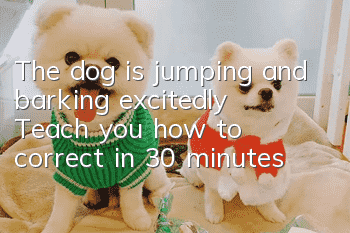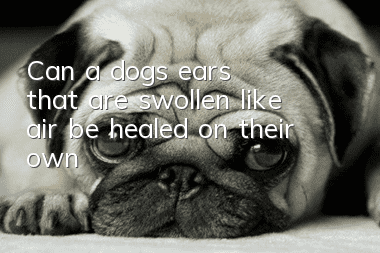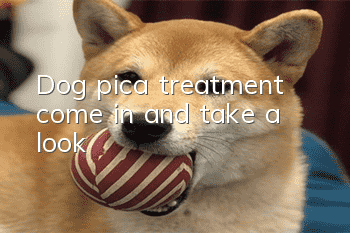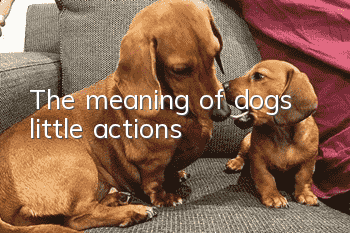The dog is jumping and barking excitedly? Teach you how to correct in 30 minutes

When puppies are growing up, they are full of curiosity just like human babies. Human babies want to grab anything they come across with their hands. This is how they interact with the world. Puppies have no hands, so the way they interact with the world is to bite with their mouths.
Puppies between 2 and 3 months old will start biting. This period is very important. As long as you learn to control it properly, you can greatly reduce the damage caused by the dog's teeth to people and objects.
The biting behavior of puppies is different from that of adult dogs. The biting behavior of puppies does not contain aggression or other emotions. It is just an exploratory behavior similar to that of a baby curiously grabbing things with its hands. Therefore, as long as the owner pays attention and teaches corrections, the puppy can be controlled. Dog biting behavior is an easy thing.
Next, let’s learn how to train your dog’s bad habit of biting from an early age~
Training scene simulation
First, let’s do a set of scenario simulation analysis:
Scene
When you are sitting in the living room with your legs crossed and shaking, your puppy will rush over and try to bite your dangling trouser legs.
Analysis
Moving things are very attractive to puppies. In their hearts, they will naturally think that they are an object waving to them and let them pass by.
Correction
1. When a puppy mistakenly bites a person's body or an object, use actions or words to express "NO" to it sternly.
2. Stop shaking your legs. Things that the puppies find fun will no longer be fun. If it continues to bite the object that has stopped shaking, the "NO" warning must be repeated in order to let it realize that this thing is not fun anymore.
3. If you continue to bite for too long, you can roll up your trousers. The meaning of this action is to make the puppy take the initiative to give up biting and deepen its understanding of the "NO" behavioral mark.
4. After the puppy gives up biting, it will enter a calm state (sit down or be in another quiet state, wait for your instructions or go away to do other things). At this time, rewards must be given as soon as possible (word marks, such as Good + snacks) prize). Make it understand that calmness (no biting) = reward = this is right. Repeated training can achieve the best results.
“Puppy training must not only be considered reasonable by the owner, but must also conform to its logic and nature to be meaningful.”
TrainingPractice misunderstandings
Why your training has achieved nothing? Let’s popularize some misconceptions:
1. It was biting me. I turned around and touched it with my hand to try to stop it (hit it/push it): it didn’t hurt or itch, and when it saw you reaching out, it thought you were about to play with it, so it bit your hand. The bite will be more enjoyable, but if you bite too hard, it will feel pain and may become afraid of you, which is not conducive to establishing a close relationship with your pet in the future.
2. It was biting me, and I used a newspaper tube to lightly spank/slap the butt as punishment: Humans naturally think that spanking is a punishment, but please consider it from the perspective of puppies. In fact, they cannot understand it. Therefore, for puppies, this kind of punishment is neither painful nor itchy, and cannot have a training effect.
3. It was biting me, and I pressed its head to the ground with my hands:
It doesn’t understand what you are doing. If you press it to the ground in a posture that the dog does not understand, it will only make it scared. When you hold your dog down, he seems to have calmed down, but the moment you take your hand away, the dog will pounce on you and bite you. Because in its world "the hand (this toy) starts to move around again, and I can bite it again."
Correct training method
A correct education method should be:
1. Issue a warning (indicating that the behavior is wrong)
2. Repeat the warning (interference with the behavior)
3. Continuous warning (stop the behavior)
4. After the behavior stops, reward it
Puppies are still young, so when they see you, they will rush over and bite your clothes and hands. This is natural and easy to understand. But on the other hand, this means that your dog does not know how to respect you and does not have the courtesy to get along with humans.
You can give the "NO" command when the puppy bites you. If it is completed, please reward it so that it understands that it cannot bite you every time it sees you. This training not only reduces bites on you, but also greatly reduces the chance of biting others.
- Identifying colds in dogs
- How often do you need to deworm your dog in summer?
- Can puppies eat shrimp?
- When should puppies be dewormed externally?
- What should I do if my puppy eats desiccant?
- What is the reason why Alaskan dogs stagger when walking? A must-read for pet owners!
- What are the symptoms of anorexia in dogs?
- How to apply for a dog breeding license? What are the requirements for applying for a dog ownership license?
- How to brush your dog’s teeth
- How to train a dog to refuse food from strangers



